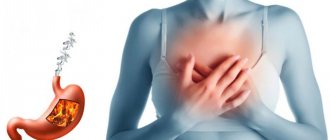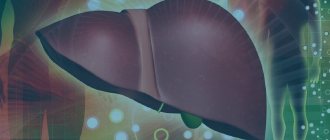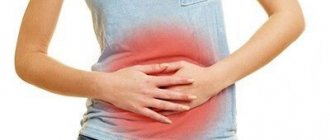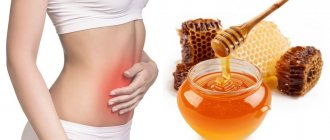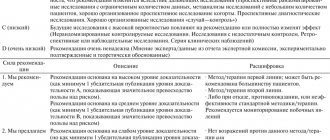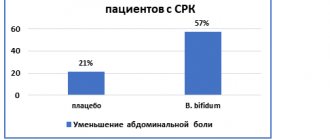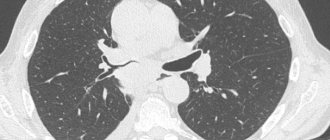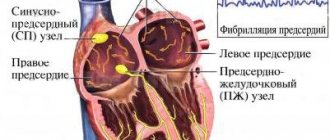General information
Duodeno-gastric reflux (syn. reflux gastritis , biliary reflux , alkaline gastritis , biliary gastritis ) is a pathological process of retrograde flow of bile contents of the duodenal intestine into the stomach, which can be accompanied by clinical symptoms, histological signs and endoscopic changes of reactive (chemical) gastritis.
The term "refluxus" means "reverse flow". Under physiological conditions, bile from the duodenum should not enter the anatomically overlying parts of the digestive canal, therefore the bile reflex is considered a pathological phenomenon. DGR occurs as a result of excessive flow of bile from the duodenum due to insufficiency of the pylorus, which acts as a barrier to the retrograde flow of bile or due to a violation (reduction) of anterograde peristalsis of the stomach and duodenum. Modern scientific research indicates an increase in the number of diseases caused by the presence of pathological duodenogastric reflux in patients. At the same time, the high prevalence of GHD (in 46-52% of cases) and the frequent combination with chronic gastritis , functional dyspepsia , peptic , GERD , stomach cancer , Barrett's esophagus , sphincter of Oddi dysfunction , duodenostasis , postcholecystectomy syndrome , etc. complicates their course and therapy. GHD is quite common after surgery (in 16% of cases after cholecystectomy and in almost 55% of cases after surgery for duodenal ulcers).
In addition, duodenal reflux can cause the development of metaplasia of the esophageal epithelium, severe esophagitis and squamous cell carcinoma of the esophagus against the background of metaplasia. It should be noted that gastroduodenal reflux in its “pure” form (positioned as an isolated diagnosis) is relatively rare (10-15%) and is mainly diagnosed against the background of other diseases. That is, in most cases, GHD is a syndrome accompanying a number of diseases of the upper gastrointestinal tract.
GHD occurs due to excessive flow of bile from the duodenum due to insufficiency of the pylorus, which acts as a barrier to the retrograde flow of bile or due to a violation (reduction) of anterograde peristalsis of the stomach and duodenum.
Thus, duodenal pathological reflux complicates the course of various organic/functional diseases of the gastrointestinal tract, which necessitates its timely diagnosis, correct clinical interpretation and adequate drug correction.
conclusions
1. The results of the study showed the following: GHD leads to inflammation, foveal hyperplasia, interstitial edema, fibroproliferation and ridge arborization.
2. H. pylori
leads to an increase in inflammation, manifested in the form of an increase in the activity and severity of inflammation, foveal hyperplasia, and the number of lymphoid follicles of mild and moderate severity.
3. GHD in children may have clinical manifestations in the form of pain and a painless course. With a pain syndrome, as with a painless course, changes in the morphological picture are noted equally, therefore it is incorrect to judge the severity of morphological changes by the severity of pain.
4. DGR leads to the development of certain morphological manifestations, which does not allow it to be regarded as a physiological process.
There is no conflict of interest.
Pathogenesis
The pathogenetic mechanisms of development of GDR are based on:
- failure of the sphincter apparatus, which allows the contents of the duodenal intestine to freely reach the stomach through the pyloric/lower esophageal sphincters;
- antroduodenal dysmotility (disorder of coordination between the pyloric/antral parts of the stomach and duodenal intestine), which leads to disruption of control over the direction of flow of duodenal contents;
- elimination of the antireflux barrier after surgery (partial gastrectomy ).
With the development of pathological GHD due to dysfunction of the sphincters, bile retrogradely, as part of the refluxate, enters from the duodenum into the higher located stomach. Components of duodenal contents, represented by bile acids, lysolecithin and trypsin , have an aggressive damaging effect on the gastric mucosa. Taurine conjugated bile acids and lysolecithin have the most pronounced effect, especially at acidic pH, which determines their synergy with hydrochloric acid in the development of gastritis . Trypsin and non-conjugated bile acids have a pronounced toxic effect at slightly alkaline and neutral pH, while the toxicity of non-conjugated bile acids is provided predominantly by ionized forms that can easily penetrate the coolant.
Long-term exposure of the coolant to bile acids contained in bile causes necrobiotic and dystrophic changes in the surface epithelium and leads to the condition of reflux gastritis (gastritis C).
In the presence of Helicobacter pylori, the damaging effect of the refluxant on the coolant is enhanced. The formation of DGR contributes to disruption of the motility of various parts of the gastrointestinal tract and the function of the sphincters, which leads to disruption of the digestive conveyor, has a negative effect on membrane/cavity digestion and absorption of food ingredients, and changes the water balance. The aggressive influence initially manifests itself in the form of increasing atrophy, dysplasia and metaplasia of the coolant, which form the risk of developing gastrocarcinogenesis. The gradual aggressive effect of bile with pancreatic juice contributes to the fact that superficial gastritis progresses and mucosal erosions transform into erosive and ulcerative lesions of the coolant.
Newspaper "News of Medicine and Pharmacy" Gastroenterology (407) 2012 (thematic issue)
Duodenogastric reflux (DGR) accompanies the course of many common diseases of the digestive tract, especially its upper sections. GDR is detected on average in 50% of patients with reflux symptoms: 32% of these patients have “pure” GDR, which allows it to be positioned as an isolated diagnosis.
GHD can be observed in functional dyspepsia, gastroesophageal reflux disease (in 20% of cases), gastritis (including reflux gastritis type C), peptic ulcers of the duodenum, gastric ulcers, gastric cancer, duodenostasis, sphincter of Oddi dysfunction (SDO) , postcholecystectomy syndrome (PCES). DHR occurs after surgical interventions (in 52.6% of cases - after suturing a duodenal ulcer, in 15.5% of cases - after cholecystectomy).
The development of GHD is provoked by insufficiency of the sphincter apparatus of the gastrointestinal tract, disorders of the obturator ability of the pylorus (pyloric dehiscence), increased intraduodenal pressure, antroduodenal dysmotility, promoting retrograde flow of duodenal contents, aggressive refluxate, increasing the volume of gastric contents.
In the development of GHD, the following are of pathogenetic importance:
- the damaging effect of pancreatic enzymes (trypsin), bile acids (lysolecithin) on the mucous membrane of the stomach, esophagus, oral cavity, leading to the destruction of the protective mucin barrier of the mucous membrane of the stomach, esophagus;
— reverse diffusion of hydrogen ions into the submucosal layer of the stomach;
- damage by bile acids to the refluxate membranes of epithelial cells, as a result of which the cells become more sensitive to aggression factors - hydrochloric acid, pepsin, HP.
Disturbances in the motor-evacuation function of the digestive tract accompany many functional and organic diseases of the digestive organs, in which GHD occurs with equal frequency.
In functional diseases (FD, DSO), impaired motor function acts as a primary pathogenetic factor, and in organic pathology (gastritis, peptic ulcer), impaired motor function is secondary. Dysmotor changes are manifested by impaired coordination of contractile activity and evacuation, which leads to the development of gastro- or duodenostasis, retrograde peristalsis and the occurrence of reflux. These disorders can be combined with each other in various combinations: pyloric spasm can be combined with duodenostasis and slower evacuation during normal contractile activity of the stomach, and a decrease in gastric tone can be combined with increased contractile activity of the duodenum, duodenogastric reflux and pyloric dehiscence. Changes in gastric motility and slower evacuation lead to the appearance of a yellow coating on the tongue, bitterness in the mouth, nausea, and sometimes vomiting, which are the clinical components of GHD. Therefore, it is understandable that doctors are interested in drugs that can modulate the motor-evacuation function of the stomach and duodenum and prevent the occurrence of GHD.
Modern diagnosis of GHD is based on the use of pH monitoring, FGDS, electrogastroenterography, fiberoptic spectrophotometric system (Bilitec 2000), which allows determining the concentration of bilirubin in the esophagus regardless of pH values.
Treatment of patients with GHD should be comprehensive and differentiated depending on the underlying disease against which GHD developed.
Patients need to be informed about the need to modify their lifestyle (quitting smoking, controlling body weight, avoiding obesity, avoiding overeating and uncontrolled use of medications unnecessarily, especially NSAIDs, aspirin, caffeine, choleretic drugs, etc.).
The means of pathogenetic therapy for GHD are modern drugs with prokinetic action, which have a positive effect on antroduodenal motility, regulate the motor-evacuation function of the upper and lower gastrointestinal tract, preventing the reflux of acidic and alkaline contents into the stomach and esophagus.
A modern selective prokinetic drug of the second generation with a combined mechanism of action that enhances the motor activity of the entire gastrointestinal tract and prevents the development of GHD is Primer (itopride hydrochloride).
The prokinetic effect of the Primer is associated with an increase in the release of acetylcholine, stimulation of muscarinic receptors, increased peristalsis of the digestive tube, increased pressure of the lower esophageal sphincter when it is insufficient, and increased gastric motility.
The mechanism of action and features of the drug are revealed as follows:
- the drug is both an antagonist of peripheral dopamine D2 receptors and an acetylcholinesterase blocker (activates the release of acetylcholine, prevents its degradation and thus has an anticholinesterase effect);
— blocking D2 receptors while taking the drug increases the activity of adenylate cyclase in the myocytes of the esophagus, stomach, duodenum, gallbladder and cAMP levels, which stimulates the motor activity of these organs;
- has minimal ability to penetrate the blood-brain barrier into the central nervous system, including the brain and spinal cord;
- has a modulating effect on the hypothalamic-pituitary-adrenal system due to an increase in the concentration of some gastrointestinal hormones (motilin, somatostatin) and a decrease in the level of cholecystokinin, adrenocorticotropic hormone;
- drug metabolism allows you to avoid unwanted drug interactions when taking other pharmacological agents metabolized by enzymes of the cytochrome P450 system, without changing their pharmacological properties, since the drug is metabolized by flavone monooxygenase without the participation of CYP450. The absence of inhibition of cytochrome CYP450 indicates minimal hepatotoxicity of the drug;
- enhances propulsive motility of the stomach and accelerates its emptying;
— increases the peristaltic activity of the small and large intestines due to its cholinomimetic effect;
- has an antiemetic effect, which is realized through interaction with D2-dopamine chemoreceptors of the trigger zone;
- practically does not cause side effects inherent in prokinetics - gynecomastia, increased prolactin levels and does not contribute to prolongation of the QT interval on the electrocardiogram;
- has a higher safety profile compared to other prokinetics (mosapride).
There is a large evidence base based on clinical studies of itopride hydrochloride in different countries. Basically, clinical trials of the drug concerned GERD and NERD, proving the ability of itopride to reduce the manifestations of gastroesophageal reflux: in patients, the intensity of GER symptoms decreased, the time with pH < 4 in the esophagus decreased, the de Meester index decreased, i.e. Itopride, given at a dose of 100 mg 3 times a day, reduces GER and is potentially effective for GERD.
In the treatment of patients with NERD, when there is reflux of acidic and alkaline contents into the esophagus and only clinical symptoms of the lesion are determined, and the wall of the esophagus is not yet damaged - there is no esophagitis, it is advisable to prescribe itopride, which allows to restore motility of the esophagus and stomach, increase the amplitude of contractions of the walls of the esophagus and stomach , strengthen their propulsive ability (especially in young people).
In a study undertaken by K. Inoue et al. (1999), it was shown that in a group of 30 patients with non-ulcer dyspepsia and reflux esophagitis who took itopride at a dose of 50 mg 3 times a day for 8 weeks, a significant improvement occurred in 20. The authors concluded that the drug very effective in relieving heartburn symptoms in patients with GERD and non-ulcer dyspepsia.
According to the results of a Russian multicenter clinical study, it was noted that in patients with heartburn, the use of itopride for 4 weeks led to complete elimination of the symptom in 60.4% of cases, belching disappeared completely in 48.1% of patients, regurgitation disappeared in 11.9%, decreased significantly in 88.1%. Itopride therapy was characterized by high patient adherence to treatment and the absence of serious side effects. In standard doses, itopride does not lead to an increase in prolactin levels in the blood, an increase in gastrin secretion and gastric secretion.
All of the above medicinal properties of the drug determine its ability to quickly and effectively eliminate dysmotor disorders - belching, nausea, bitterness in the mouth, vomiting, flatulence, a feeling of fullness in the abdomen.
In all clinical studies of itopride hydrochloride has established itself as a drug characterized by good tolerability and the absence of serious side effects, which gives grounds to consider it as a first-line drug in the treatment of dysmotor disorders, in particular GHD, FD, cyclic vomiting syndrome, duodenostasis, etc.
Purpose of the study: to study the clinical effectiveness and safety of the drug Primer in patients with GHD with functional dyspepsia and dysfunction of the sphincter of Oddi and reflux gastritis (type C).
Criteria for inclusion of patients: the presence of nausea, bitterness in the mouth, vomiting as the main dyspeptic symptoms in patients with GHD with FD, DSO, reflux gastritis (type C), young age of patients (up to 45 years), patients who do not have alarming symptoms.
Exclusion criteria for patients: patients with severe abdominal pain syndrome, patients with active peptic ulcer, patients with GERD.
Materials and research methods
We examined 57 patients with GHD, of which in 20 (35%) GHD was observed with functional dyspepsia (FD), in 19 (33.3%) patients GHD occurred against the background of sphincter of Oddi dysfunction (SDO) of the biliary type, in 18 (32 %) patients. %) of patients, GHD was recorded with reflux gastritis (type C). Among the patients examined, there were 23 (40%) men and 34 women, aged from 23 to 45 years. The average duration of GHD symptoms was 6.5 ± 1.2 years (p < 0.05).
All patients were hospitalized in the gastroenterology department.
Diagnoses of FD, DSO and reflux gastritis (type C) were verified according to international requirements. The presence of GHD in the examined patients, in addition to clinical symptoms, was reliably confirmed by FGDS and intragastric pH-metry.
In accordance with the purpose of the study, all patients, against the background of dietary and regimen measures, and, if necessary, combination therapy, received the drug Primer (itopride hydrochloride) 1 table. (50 mg) 3 times a day 15 minutes before meals for 2 weeks. Subsequently, at the outpatient stage, when the symptoms of GHD decreased, patients were recommended to take Primer for another 2–3 weeks on an as-demand basis, reducing the dose to 1–2 tablets per day.
Criteria for the effectiveness of treatment: dynamics of clinical manifestations, dynamics of endoscopic indicators, dynamics of intragastric pH-metry indicators, dynamics of multiphase duodenal intubation indicators, absence of side effects of the drug.
Among the risk factors for the development of GHD, it should be noted dietary errors - in 32 (56.1%) patients, obesity - in 11 (19.3%), smoking - in 24 (42.1%), alcohol intake - in 20 (35). %), physical stress - in 12 (21%), taking NSAIDs, choleretics, antispasmodics - in 17 (29.8%), chronic stressful situations - in 10 (17.5%).
Information was collected from patients using a special questionnaire.
The main clinical manifestations of GHD were: bitterness in the mouth - in 39 (68.4%) patients, nausea - in 19 (33.3%), episodic vomiting of bile - in 9 (15.7%), yellow coating on the tongue - in 18 (31.5%), a feeling of severe discomfort in the epigastrium and right hypochondrium - in 41 (71.9%), pain in the right hypochondrium - in 21 (36.8%) patients, belching of bitter and airy - in 31 (54 .3%). 13 (22.8%) patients had severe constipation syndrome. A decrease in nutritional status was observed in 8 (14.4%) patients - BMI was reduced to 18.40 ± 0.05 kg/m2, BMI more than 30 kg/m2 was observed in 14 (24.5%) patients (p < 0. 05), asthenovegetative syndrome was detected in 36 (63.1%) patients. A decrease in quality of life was noted by 80% of patients.
The symptom severity scale was measured in points from 0 to 3:
— 3 points — the symptom was pronounced, complicating the patient’s usual life activities;
— 2 points — the symptom was of moderate severity, but affected the patient’s daily activity;
— 1 point — the severity of the symptom was mild, and it did not affect the patient’s normal life activities;
— 0 points — no symptoms.
These symptoms were scored before and after treatment with Primer.
The severity of clinical symptoms of GHD, equal to 3 points, was noted in 63.15% of patients, 2 points - in 28% of patients, 1 point - in 8.8% of patients.
During FGDS, an increased amount of bile in the stomach was visualized in all studied patients: against the background of intact mucosa - in 35% of patients (p < 0.05), against the background of erythematous gastropathy - in 33% of patients, in 32% of cases reflux gastritis (type C), pyloric dehiscence was observed in 36.8% of patients, pylorospasm - in 22.8% of patients.
When performing intragastric pH-metry, continuous acid formation of moderate intensity with decompensation of the astral part of the stomach was detected in 25% of patients; normacidity was determined in 45% of patients, mild hypoacidity in 30% (p < 0.05). There was an appearance and increase in the total number of episodes of bile reflux and the number of periods of retrograde evacuation of the contents of the digestive canal, lasting more than 5 minutes, throughout the study in all patients. The obtained acidograms of the patients revealed DGR in the form of “jagged” alkalization or a rapid increase in pH in the antrum up to 7.0 units, not associated with food intake or saliva intake. At the same time, a significant prolongation of the periods of time of presence of bile in the stomach was recorded (p < 0.05), which documents the presence of GHD in the studied patients and is consistent with the opinion of a number of authors.
When conducting fractional multi-stage duodenal intubation (FMD) in 11 (58%) patients with DSO of the biliary type, an increase in the volume of bile of portion “B”, stagnation of the cystic portion of bile and an extension of the time of excretion of cystic bile to 62.4 ± 0.3 min were noted. decrease in the time of closed sphincter of Oddi to 2.1 ± 0.8 min (p < 0.05), which indicates DSO of the hypotonic type.
In 8 (42%) patients, an increase in the time of closed sphincter of Oddi (12.4 ± 0.8 min), a decrease in the time of emptying of the gallbladder (15.6 ± 0.7 min) with the release of a small portion of bile in this phase was determined ( 23.5 ± 1.4 ml), which indicates hypertonicity of the sphincter of Oddi in these patients.
When performing an ultrasound scan of the liver, gallbladder and bile ducts, the size of the liver was within normal limits, the gallbladder was of normal size, the walls were not thickened, biliary sludge of grade I–II was detected in 25% of patients, which is typical for hypotonic dysfunction of the gallbladder. There was an expansion of the common bile duct by an average of 4 mm compared with the norm, which indicates a violation of the outflow of bile.
Treatment results and discussion
In all studied patients, against the background of a 2-week treatment in a gastroenterological hospital with the drug Primer, positive dynamics were observed, manifested by the disappearance (in 87.7% of patients) and reduction (in 8.7% of patients) of the clinical manifestations of GDR by the end of the first week, in 3.6% of patients continued to experience nausea and bitter belching, but less severe than before treatment (which disappeared with continued on-demand dosing at week 3). Among patients with increased BMI, bitter belching decreased in 32.2% of patients and completely disappeared in 67.7% (p < 0.05).
By the end of the hospital stay, the constipation syndrome in patients significantly decreased, and in 2/3 of cases the stool returned to normal.
The severity of symptoms of GHD according to the scoring system during treatment with Primer also underwent significant positive dynamics: the severity of symptoms with a score of 3 points was not noted by patients, with a score of 2 points was determined in 1.8% of patients, with a score of 1 point - in 5.2 % of patients (p < 0.05).
When carrying out control endoscopy after 2 weeks of treatment with Primer, positive dynamics were noted - a complete absence of DGR was observed in 19 (95%) patients with FD out of 20 before treatment, in all patients with DSR (100%) (p < 0.005) and in 16 (88 .8%) of patients with reflux gastritis. The closing ability of the pylorus was normalized in 57.1% of patients, pylorospasm was not detected in 53.8% of patients. Clinical and endoscopic remission of reflux gastritis C occurred at the outpatient stage - at the 3-4th week of treatment, which confirms the pronounced prokinetic effect of Primer as a proven pathogenetic drug in relieving the symptoms of GHD and in organic pathology (elimination of aggressive reflux and restoration of the gastric mucous barrier) .
When performing intragastric pH-metry at the end of a 2-week hospital treatment, the total number of reflux episodes significantly decreased - they were absent in 98.2% of patients. The duration of duodenogastric reflux also decreased and averaged 2–2.5 minutes (p < 0.005).
When conducting fractional multi-stage duodenal intubation in patients with DSO, normalization of the bile volume of portion “B” to 62.5 ± 0.5 ml (p < 0.005), an increase in the time of closed sphincter of Oddi to 6.2 ± 0.2 min was noted, which practically reaches normal values, and the time of cystic bile secretion decreased to 40.7 ± 0.8 minutes, while a decrease in pain in the right hypochondrium was noted (p < 0.005). These changes indicate a decrease in the manifestations of hypotonic dysfunction of the sphincter of Oddi and an improvement in the contractility of the myocytes of the gallbladder wall. In patients with existing hypertonicity of the sphincter of Oddi, during treatment with Primer against the background of antispasmodics, a positive dynamics of restoration of bile passage was also noted: the period of the closed sphincter of Oddi significantly decreased to 7.4 ± 0.5 minutes, normalization of the time of emptying the gallbladder was recorded to 28.6 ± 0 .6 ml and the volume of released gallbladder bile increased to 48.2 ± 0.8 ml (p < 0.005). During control ultrasound, normalization of the diameter of the common bile duct (p < 0.005) and restoration of the passage of bile through the bile ducts were noted.
In all studied patients, signs of discomfort in the upper abdominal cavity decreased, appetite, sleep, and ability to work improved, which had a positive effect on the patients’ quality of life.
The majority of patients rated the therapeutic effectiveness of the drug as high - 53 (92.9%) patients, good - 3 (5.3%) patients, satisfactory - 1 (1.75%) patient.
Literature data and our own clinical observations indicate the high therapeutic effectiveness of the drug Primer in eliminating the clinical symptoms of GHD, which occurs against the background of various functional and organic lesions of the gastrointestinal tract, biliary system and has a pronounced prokinetic effect.
conclusions
1. The use of Primer in patients with GHD with FD, DSO, reflux gastritis C is pathogenetically justified, it contributes to the disappearance of the clinical manifestations of GHD - nausea, bitterness, vomiting in the first 1-3 days of taking the drug. In 80% of patients, there was a decrease and/or disappearance of belching, regurgitation, pain in the epigastrium and right hypochondrium, asthenovegetative syndrome (100%), as well as constipation syndrome in 75% of cases.
2. The complete absence of DGR (according to FGDS) under the influence of treatment with Primer was observed in 95% of patients with FD, in all patients with DSO (100%) (p < 0.005), in 88.8% of patients with reflux gastritis type C, which confirms the pronounced pathogenetic orientation and therapeutic effectiveness of the drug.
3. The therapeutic effectiveness of the Primer was assessed as high by 92.9% of patients with GHD.
4. The primer has a significant prokinetic effect - it normalizes the motor-evacuation function of the esophagus, stomach, duodenum, gallbladder and sphincter of Oddi, intestines.
5. The drug exhibits a pronounced prokinetic effect in biliary type DSO: it normalizes the contractile function of the gallbladder and sphincter of Oddi, which is reliably confirmed by data from multiphase duodenal intubation, and reduces the manifestations of reflux gastritis, which was proven during control FGDS. By eliminating the clinical manifestations of GHD, Primer improves the quality of life of patients and their social adaptation.
6. The primer can be prescribed on demand for occasional nausea, bitterness in the mouth, heartburn, both in patients with GHD after the main course of treatment, and in practically healthy individuals.
7. The absence of side effects and good tolerability of the drug make it possible for longer use on an outpatient basis as monotherapy and on demand for many functional (FD, DSO) and organic (reflux gastritis type C) diseases.
Causes
The main reasons for the formation of DGR include:
- Congenital/acquired functional deficiency (weakening of the closing function) of the pyloric sphincter.
- Hyperkinetic type (with increased motility) of duodenal peristalsis.
- Inconsistency (discoordination) of the physiological cycles of relaxation/contraction of both the stomach and the DP-gut (migrating motor complex).
- Duodenal hypertension (increased pressure in the lumen of the duodenum), caused by splanchnoptosis (prolapse of internal organs), lumbar lordosis , hernias /malignant neoplasms.
- Long-term inflammation of the duodenum (chronic duodenitis , duodenal ulcer , gastroduodenitis ).
- Lack/absence of hormones ( gastrin ).
- Helminthic infestation (giardiasis).
- Anomalies in the development of the duodenal intestine.
Risk factors for developing duodenogastric reflux include:
- irregular food intake and poor quality nutrition (overeating, dry food, fatty and spicy foods that cause hypersecretion of bile);
- smoking and alcohol abuse;
- old age (after 60 years);
- long-term use of antispasmodics and NSAIDs;
- operations for resection of part of the stomach, cholecystectomy (removal of the gallbladder), anastomosis of the intestine and stomach;
- biliary dyskinesia , cholecystitis ;
- pancreatitis;
- diabetes mellitus , obesity .
Symptoms
Symptoms of duodeno-gastric reflux are not specific. As a rule, the disease manifests itself with a predominance of dyspeptic symptoms - nausea, heartburn, air/sour belching, bitterness in the mouth and vomiting bile. Periodically appearing pain in the upper abdomen, intensifying after eating, is cramping in nature and can be provoked by stressful situations, physical activity, or appear after surgery for gastrectomy, cholecystectomy, and with developed duodenal obstruction. Since GHD in its “pure” form is rare and is diagnosed mainly against the background of other gastrointestinal diseases, especially gastroduodenal pathology, the clinical symptoms of reflux are influenced by the symptoms of the underlying disease, which to a certain extent masks the symptoms of GHD.
Forms of gastroesophageal reflux disease (GERD)
According to modern concepts, there are three forms of the disease:
- endoscopically negative reflux disease, manifested by heartburn without erosive changes in the esophageal mucosa.
- endscopically positive (erosive) reflux disease with a progressive course and possible development of complications in the form of ulcers, bleeding, strictures.
- Barrett's esophagus is a condition in which irreversible changes occur in the lining of the esophagus, with a high risk of further malignant degeneration.
Tests and diagnostics
The diagnosis is established on the basis of clinical symptoms and instrumental research methods, among which the most effective are:
- Daily pH-metry - allows you to assess the height of reflux and the profile of intragastric pH.
- Ultrasound diagnostics (echography with water load): with GHD, the retrograde movement of gas and liquid bubbles (corresponding to the reflux of duodenal contents into the stomach) from the pylorus to the body of the stomach is periodically recorded on echograms.
- Transillumination hemomotodynamic monitoring. The difference in motor wave amplitude in the antrum of the stomach and the duodenal bulb is used as a GDR parameter.
- Fibrogastroduodenoscopy (swelling of the coolant, focal hyperemia, pyloric dehiscence).
- X-ray of the stomach (regurgitation of barium from the duodenum into the stomach is noted).
- Fiberoptic spectrophotometry.
If bile reflux is suspected, differential diagnosis is made with acid gastroesophageal reflux and peptic ulcers of the stomach.
Diet
Diet for bile in the stomach
- Efficacy: therapeutic effect after 10 days
- Timing: constantly
- Cost of products: 1400-1500 rubles. in Week
Nutrition correction is a mandatory element of complex therapy. A diet is prescribed for bile in the stomach. Dietary nutrition is aimed at normalizing the motility of the gastroduodenal organs. The main nutritional requirements for the patient are: small frequent meals, adherence to a meal regimen, exclusion from the diet of spicy and salty foods, canned food, marinades, fatty, smoked and fried foods and dishes, wholemeal bread that reduce the rate of gastric emptying. The consumption of various vegetables and legumes rich in fiber (radishes, legumes, turnips, radishes, asparagus) and fruits with rough skin (gooseberries, grapes, dates, currants), as well as coarse cereals (pearl barley, barley, millet, corn) is limited. Limit the consumption of sugar, honey and jam, chocolate. The diet should be based on low-fat boiled, easily digestible foods: light soups, porridges, chicken meat without rough crust, boiled fish and vegetables/vegetable purees, fruit/oatmeal jelly.
Patients with GHD should avoid physical activity and heavy lifting after eating, which increases intra-abdominal pressure. It is equally important to prevent flatulence / constipation . However, since GHD occurs predominantly against the background of other gastrointestinal diseases, a diet for the underlying disease may be prescribed, for example, Diet No. 5 , Diet for gastric ulcer , Diet for gastritis , Diet for gastroduodenitis , etc.
Prevention
Prevention of GHD consists of:
- Timely treatment of gastrointestinal diseases (especially gastroduodenal pathology).
- Correction of body weight.
- Maintaining the correct diet to ensure physiologically normal gastrointestinal motility.
- Quitting smoking and alcohol abuse.
- Normalization of physical activity and psycho-emotional sphere. Elimination of factors that provoke reflux (lifting weights, exercises with strong abdominal tension, avoiding being in a horizontal position after eating, working in an inclined position).
- Exclusion/avoidance of long-term use of medications that worsen bile rheology and gallbladder motility (antibiotics, expectorants, sedatives, NSAIDs, estrogens, antispasmodics, β-blockers, hypnotics, calcium channel blockers).
Drug treatment
The list of medications includes:
- antibiotics for diagnosed H. pylori infection;
- antisecretory drugs for the form with high acidity;
- antacids to relieve heartburn;
- if indicated - antispasmodic and enzyme preparations, vitamins, reparation stimulants, sedatives and herbal remedies.
Complex treatment of the disease continues for several weeks. If symptoms are severe, it is recommended to begin therapy in a hospital followed by continuation on an outpatient basis.
List of sources
- Zvyagintseva T.D., Chernobay A.I. Functional disorders of the motor-evacuation function of the digestive tract and their pathogenetic correction // News of medicine and pharmacy. – 2009.– No. 294. pp. 7–11.
- Zvyagintseva T.D., Chernobay A.I. Duodenogastric reflux in the practice of a gastroenterologist: obvious dangers and hidden threats // Medical newspaper “Health of Ukraine”. 2012.—No. 1. P.11.
- Trukhan D.I., Filimonov S.N. Differential diagnosis of the main gastroenterological syndromes and symptoms. M.: Practical Medicine, 2016. 168 p.
- Trukhan D.I. Rational pharmacotherapy in gastroenterology // Directory of a polyclinic doctor. 2012. No. 10. pp. 18–24.
- Bagnenko G.F., Nazarov E.V., Kabanov M.Yu. Methods of pharmacological correction of motor-evacuation disorders of the stomach and duodenum. // Rus. honey. magazine. Diseases of the digestive system. –2004. – T. 1. – P. 19-23.
